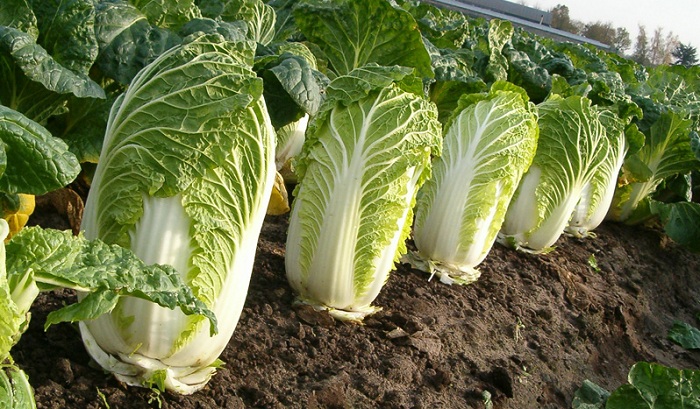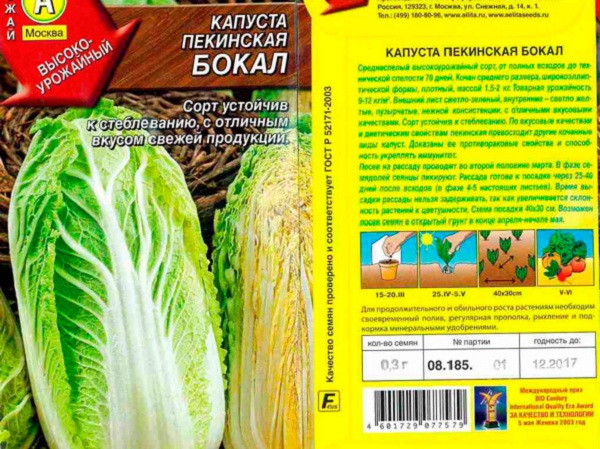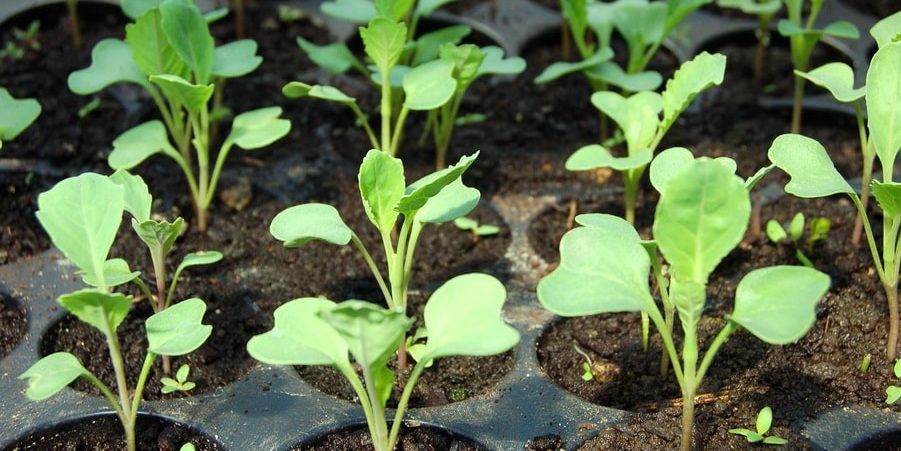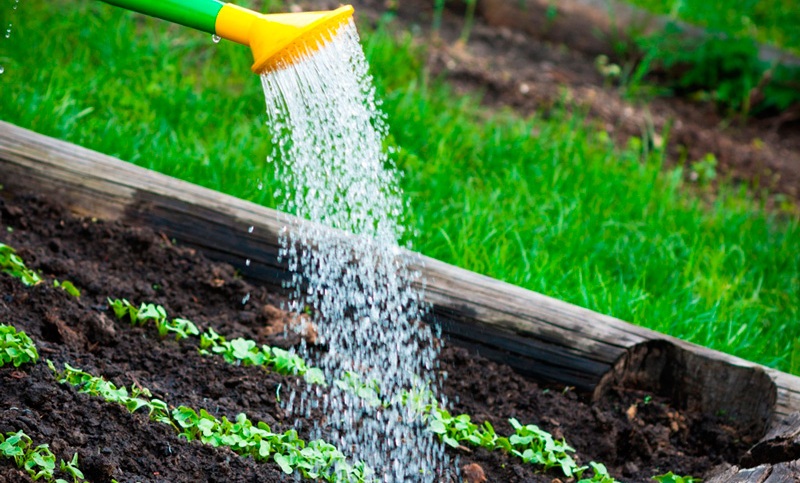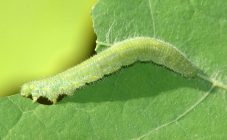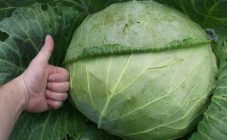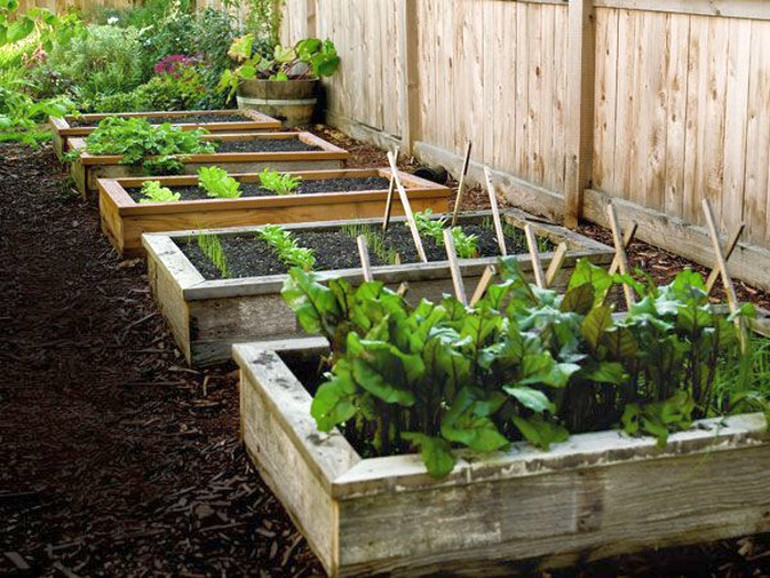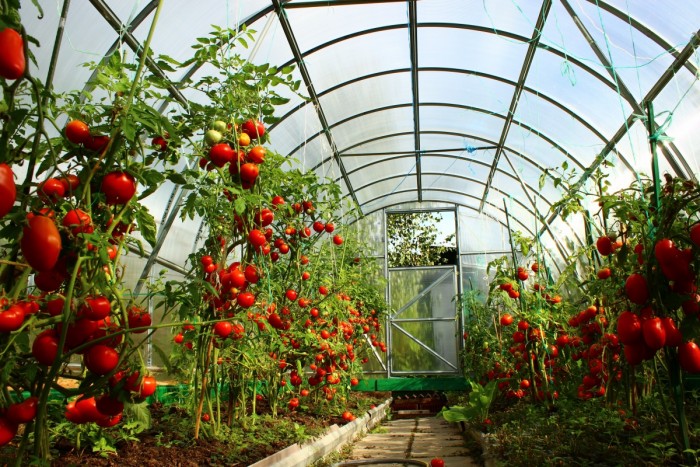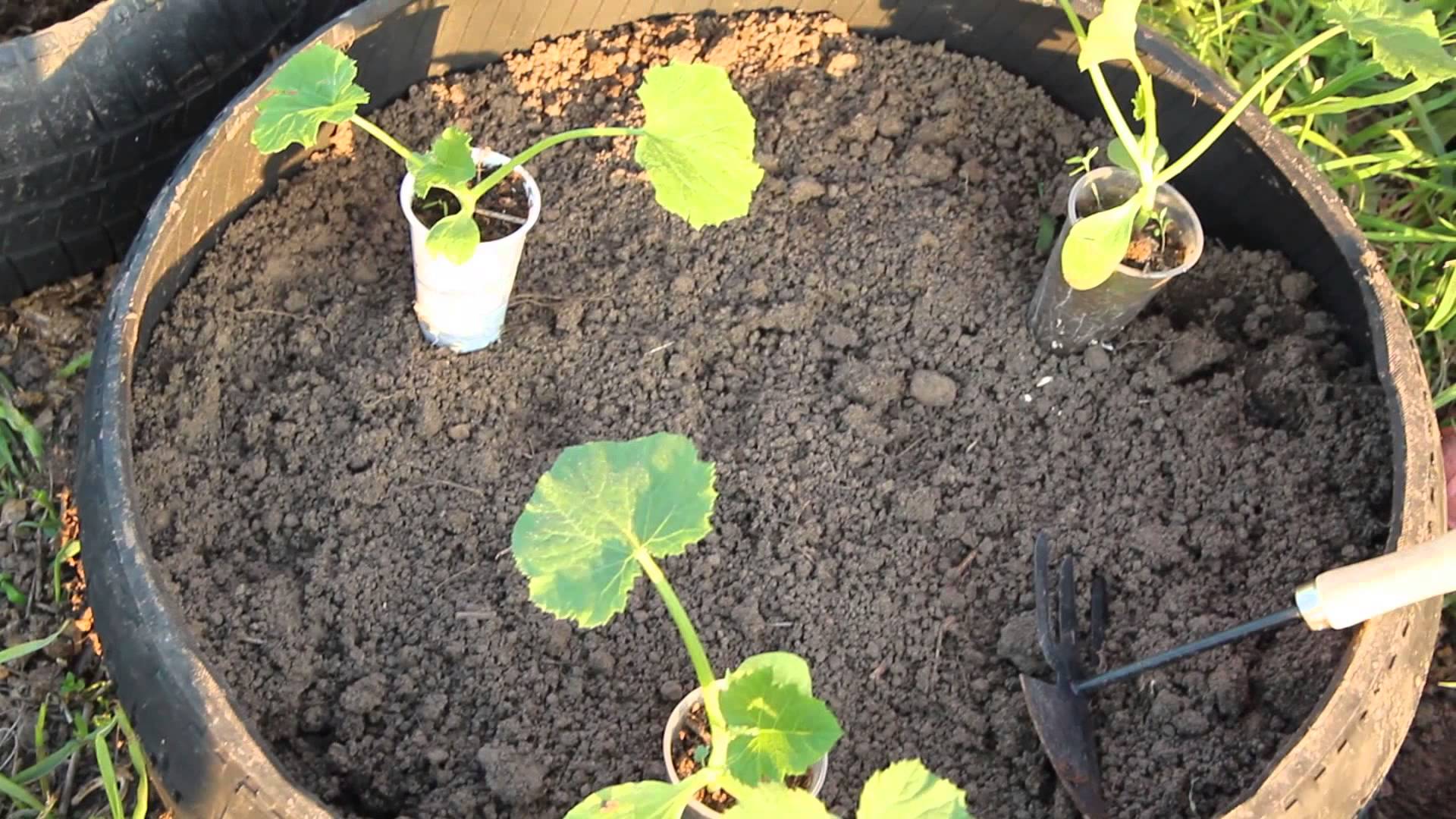Content:
Peking cabbage is a relatively new guest at vegetable stalls. She is loved for her taste, benefits and availability. However, it is not so often found in vegetable gardens. Many people mistakenly believe that this "overseas" vegetable is capricious. In fact, growing it is no more difficult than growing a native white cabbage.
The benefits of Chinese cabbage
Peking cabbage came to us from China. For this reason, it is sometimes called Chinese, as well as salad and petsai. In terms of taste, it is compared to Romano salad. The leaves can be light green to very dark. At home, this vegetable was considered almost a panacea for all ailments.
The calorie content of Chinese cabbage is only 16 kilocalories per 100 grams. But at the same time, due to its rich composition, this vegetable provides saturation for a long time. It is noteworthy that the green and white parts of the leaves have a different composition:
- The green part contains vitamin C and some fiber.
- The white part is rich in vitamins A, K and a high content of dietary fiber, necessary for the normal functioning of the intestines.
It is quite easy to figure out how to plant Chinese cabbage not only for experienced gardeners, but also for novice gardeners.
Variety selection
The first variety that began to be grown in Russia is Khibinskaya. Now the number of varieties is so diverse that you can choose the one you need according to the characteristics: early and late, more productive, suitable for a certain strip of the country.
The best early varieties:
- Richie F1. One of the earliest ripening hybrids. Heads of cabbage reach a weight of 2.5 kilograms and are quite dense in structure. One of the advantages of the variety is its resistance to one of the most dangerous Peking diseases - mucous bacteriosis. However, it will not work for a long time - the leaves of the Richie cabbage are very tender.
- Vesnyanka. Record holder in terms of ripening. From the moment of sowing seeds to harvesting, it takes only 35 days. Not every variety can boast of this. Ideal for use in salads due to its juiciness.
- Lenok F1. This variety can be attributed to something in between lettuce and cabbage. Heads of cabbage have an average weight of only 300 grams. Possesses high taste, it is recommended for fresh consumption.
- Semi-cabbage. Quite early ripening variety - ripening period is only 40 days. Suitable for growing in a greenhouse. But, like its other early cousins, it is not suitable for long-term storage. Most of the nutrients and vitamins begin to be lost after a few days of storage.
- TSKHA 2. This variety is distinguished by small heads of cabbage, but high palatability. Great for diet food.
Mid-season varieties suitable for growing in Russia include:
- Garnet. Refers to high-yielding varieties.The leaves are dark in color, the weight of the vegetable reaches 2.5 kilograms. Resistant to leaf death.
- Slides F1. Not exposed to keel disease. Fruits up to 2.5 kilograms, resistant to cracking. Unlike most early varieties, it is suitable for storage without significant loss of vitamins.
- Hydra F1. Ripening time is about 2 months. It has quite a classic look - oblong heads of cabbage with yellowish veins.
- Bilko. Heads of cabbage grow up to 1.5 kilograms in 60-65 days. Has a sweetish taste. Can be stored under favorable conditions for up to 2 months.
Most popular late varieties:
- Nika. A hybrid resistant to keel and flowering. The main feature is a large wrinkling and a waxy coating on the leaves. It has rather large fruits - up to 3 kilograms. It can be used not only fresh, but also for cooking with processing. Suitable for both open ground and greenhouses.
- Monument. Refers to high-yielding varieties. The fruits are large, dense.
- Wineglass. The main characteristics are beautiful salad color, small size (up to 2 kilograms) and high density of leaves. Capricious, loves warmth, so it is more suitable for growing in the southern part of the country.
When choosing a variety, one should be guided by the form in which the cabbage will be used. Do you need large heads of cabbage, or are small ones a priority. Do I need to store or the petsai will be immediately eaten.
Seat selection
Chinese cabbage loves moisture, light and coolness. The most favorable temperature for growing is up to 20 ° C. At low (up to 13 ° C) or, conversely, high (above 25 ° C) temperatures, the harvest is unlikely to please. But this does not mean that the southern part cannot grow "Peking" - agronomists successfully use the shelter of the beds with non-woven cloth and go to various tricks in order to increase the yield.
Sowing seeds for seedlings
To get a harvest in the summer, you need to sow the seeds of lettuce in late March and early April. It is best to plant the seeds in peat tablets or individual containers (cups, cells). This will avoid picking and preserve the root system as much as possible. Petsay has a hard time handling the manipulations associated with the transplant.
Sowing can be done in different ways:
- Cover the seeds with hot water for 20 minutes. Then rinse them under cold water and dry. Then you can sow after mixing with sawdust.
- Place the seeds in the ground to a depth of 1 cm, water abundantly. Keep the container in a dark place until shoots appear. Then move to a lighted place and water as the top layer of the earth dries out.
It is not necessary to harden lettuce seedlings - homemade seedlings easily take root on the street. It perfectly tolerates temperatures up to 3-4 degrees Celsius. You can transplant into open ground after the appearance of 5-6 leaves. Watering should be stopped a couple of days before planting.
Planting Chinese cabbage in open ground
For those who do not want or for some reason cannot tinker with seedlings, there is an option of sowing seeds directly into open ground. It is worth carefully choosing a landing site. The place should be well lit.
You need to prepare the holes in advance. The distance between the plants should be approximately 30 centimeters (depending on the selected variety). Humus, compost or ash must be added to each hole. Then water them thoroughly. The optimum seed depth is a maximum of 2 centimeters.Top can be sprinkled with ash and covered with foil. At a favorable temperature, the seedlings will delight in 3-7 days.
A similar planting scheme is used for planting seedlings. The maximum distance between bushes should be 60 centimeters. This is for varieties with large heads of cabbage. The minimum is 30 centimeters for varieties with small heads of cabbage.
Peking cabbage care
Caring for Chinese cabbage is not much different from caring for the more familiar white cabbage:
- Loosening of the beds is mandatory. This will allow the roots to receive the oxygen they need. It will also facilitate moisture access.
- Watering is regular. However, do not flood or make a swamp in the beds. This can lead to root rot and the reproduction of harmful insects and microorganisms.
- If the cabbage was sown directly into the ground, seedling thinning may be necessary.
- Weed control.
- Treatment for diseases and pests.
When weeding, be sure to ensure that the earth does not sprinkle the rosette of leaves!
Pest control
Juicy healthy cabbage is also loved by pests. The most common are slugs and cruciferous fleas. The latter is quite difficult to destroy. It is easier to carry out treatment for prevention.
- The cruciferous flea is afraid of ash. Therefore, you can powder the beds before sprouting (when it comes to sowing in the ground) or add ash around the beds when planting seedlings.
- You should not plant petsai in places where other cruciferous plants (radishes, cabbage of other species, daikon and others) grew before. This pest hibernates well in the soil, so the likelihood of its appearance increases significantly.
- Experienced gardeners try to outwit the flea - they plant Chinese cabbage along with garlic, onions, tomatoes and other crops.
If the cruciferous flea nevertheless appears in the beds and threatens crops, they need to be sprayed with Fitoverm or Bitoxibacillin. If this did not help, then chemistry will come to the rescue - Iskra, Aktara, Inta-Vira or Aktellika. But you need to be careful - chemicals cannot be used if there is a month or less left before harvesting.
Slugs are not only unpleasant to look at, they can do great harm to the heads of Chinese cabbage. Getting rid of these pests is not very easy. All methods come to the rescue here:
- Sprinkle the bushes with a mixture of ash, salt, mustard powder, red pepper.
- Laying burdock between the beds (it acts as a snag - slugs will want to hide under its leaves from the heat) and picking up and destroying the pest by hand.
Diseases
Unfortunately, cabbage can get sick. Therefore, you need to regularly inspect all the bushes in order to identify the disease in time and begin to fight it. Otherwise, the owner of the beds may be left without a crop.
- Leaf spot, or alternaria. A very common fungal infection. More often young bushes or heads of cabbage collected for storage are exposed to it. Blackening of the leaves is the main sign that the cabbage will soon die.
- Downy mildew, or downy mildew. Can be both on seedlings and on an adult plant. Often infected from the remains of last year's plants. The disease is dangerous because the whole head of cabbage dies.
- Powdery mildew (real). It begins with the defeat of the upper part of the leaves, gradually moving to the head.
- Wet bacterial rot or slimy bacteriosis. A very common bacterial disease. Rot-like spots appear. It leads to the death of the infected leaf and the transition to the rest of the plant.
- Keela. A disease dangerous to all cruciferous plants. It is transmitted over the surface of the soil, where it can live up to 7 years.
To prevent disease, it is recommended to soak the seeds in hot water before planting. Most diseases die from exposure to high temperatures.Also, do not plant Chinese cabbage in places where previously infected plants grew. It is necessary to carefully cultivate the soil and wait out the season.
Harvesting
Peking cabbage is quite resistant to temperature extremes. It can easily withstand frosts down to -4 ° C. In the middle lane in the beds, you can safely leave it until autumn. To understand that the head of cabbage is ready for cutting is simple - it becomes dense. Cut heads are wrapped in newspaper or plastic wrap and stored in a cool place.
